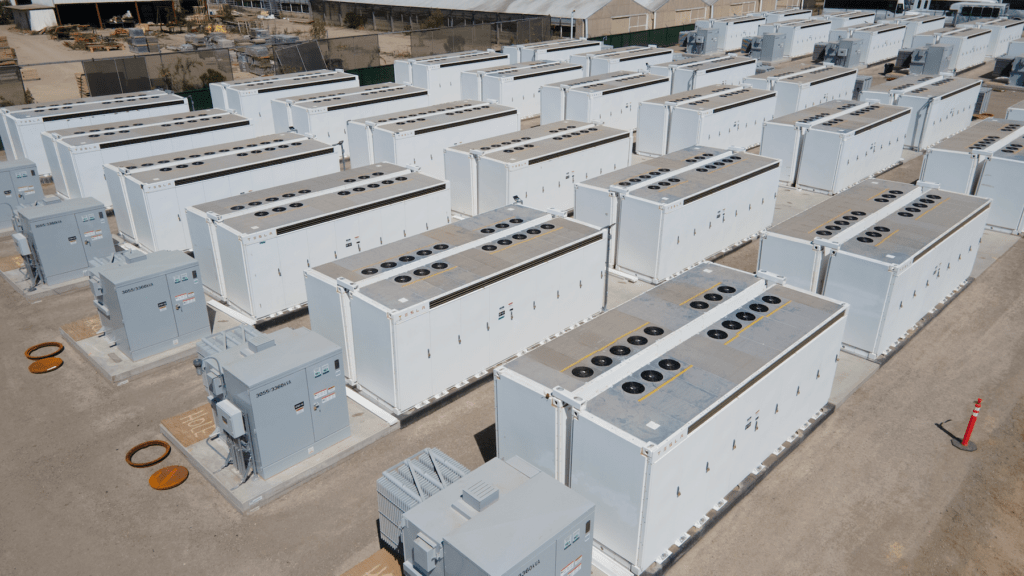Ameresco equipped the Marine Corps Recruit Depot in Parris Island, South Carolina (pictured) with clean energy tech including solar PV and battery storage. Image: Ameresco.
Microgrids are self-contained energy networks which can either be connected to the main grid or separate from it. They can also be both of those things, allowing a community or critical facility like a hospital or emergency shelter to disconnect from the grid when there’s an outage, for example.
Increasingly, clean or renewable microgrids often lean on battery storage as a key component, replacing diesel and other fossil fuel generators for the most part or relegating them to a backup role.
However, while the basic premise can be similar, microgrids today are demonstrating that a broad range of different technologies can be used. They can also be quite different in design from one project to the next, depending on what sort of applications the end customer is looking to fulfil.
Here are some recent diverse examples of microgrid project news that have come across our desks and inboxes at Energy-Storage.news.
Iron flow battery provides long-duration energy storage for recycling plant
A microgrid just inaugurated at an industrial recycling facility in Pennsylvania uses ESS Inc’s iron and saltwater electrolyte flow battery technology.
The microgrid, at technology asset waste handling company Sycamore International’s facility in the borough of West Grove, uses solar PV to reduce day-to-day electricity costs while also providing backup to prevent power outages from impacting productivity.
As reported by Energy-Storage.news in August 2021 as the project was announced, an ESS Inc 75kW/400kWh Energy Warehouse battery energy storage system (BESS) was selected by developer TerraSol Energies from a number of different options.
The flow battery system can provide between 4-12 hours of storage duration at different power rating configurations, with an expected 25-year lifetime. It is being integrated with a 115kWdc solar PV array.
“This project represents the kind of forward-thinking solution we need to build a decarbonised, resilient energy system,” US Representative for Pennsylvania’s 6th Congressional District Chrissy Houlahan said while visiting the project’s ribbon-cutting ceremony a few days ago.
Ameresco JV wins contract for missile facility’s microgrid
The US Military has long viewed microgrids as a way to enable secure and stable operation of critical facilities, reducing their vulnerability to everything from grid outages to cyber and physical infrastructure attacks.
Clean energy company Ameresco has been a provider of renewable energy, energy efficiency and smart energy upgrades and microgrids to the Forces – and to various other US Federal agencies – for several years.
The company said last week that its joint venture (JV) company HSGS-Ameresco has been awarded a contract to deploy a solar-battery-gas microgrid at White Sands Missile Range in New Mexico. A 700kW solar PV array, 500kW natural gas generator and 500kW battery storage system will be installed, beginning in December this year for completion by late 2023.
In addition to the microgrid equipment, the JV is being contracted to update various parts of the missile range, such as electrical panels, transformers and controls, fire alarm systems, adding cybersecurity and anti-terrorism measures, and more. HSGS-Ameresco will carry out all works, including supervising and providing labour, equipment, materials, supplies and transportation.
HSGS is a certified Service-Disabled Veteran Owned Small Business (SDVOSB) which carries out energy generation, smart controls and building efficiency solutions to Federal agencies.
The microgrid will be able to power water wells at the test range for up to 14 days without grid power and will support various functions of the facility such as research labs and fire response.
“This microgrid system will enable the base to provide continuous power during a loss of utility event for wells on site that provide critical water supply to the installation,” Ameresco executive VP for Federal solutions Nicole Bulgarino said.
Saft BESS supports Sicilian islands’ renewable energy growth
France-headquartered battery manufacturer and battery storage solutions company Saft will support the integration of solar PV and hydroelectric power on two islands in Sicily, Italy.
The company, owned by TotalEnergies, is perhaps best known to readers of this site for its multi-megawatt grid-scale BESS solution, Intensium Max. However, for the projects on the islands of Ustica and Favignana, its smaller-scale product, Flex’ion, is being used.
On Favignana, four small solar-plus-storage systems, each of 2.4kWp PV output and 9kWh BESS capacity are being installed, along with three standalone BESS installations, each of 24.3kWh capacity. A Saft spokesperson told Energy-Storage.news the Favignana project is expected to be completed by the end of this year.
On Ustica, which is a more remote island, hydroelectric power and solar PV totalling 64kWp will be paired with 59.5kWh of Saft Flex’ion battery storage alongside some diesel generation for backup. The project “connected to the distribution network and integrated into a smart grid in the next few months,” the spokesperson said.
Flex’ion is specifically designed to support mission critical and must-run facilities. Its modularity means the technology can be used in different voltage and power range configurations, while it is designed to be maintenance-free over an expected 20-year lifetime.
The microgrids are part of the ‘I-Sole’ project, supported by the European Union (EU) and the Region of Sicily. Local power electronics company Layer Electronics is serving as I-Sole’s technical lead, and local utilities as well as experts from the University of Palermo and the Italian National Research Council are also involved.
“Remote Italian islands like Ustica or Favignana can’t rely on the mainland for their power supply and still they aim to reduce carbon emissions by integrating more renewables into the grid,” noted Saft’s general manager for Italy, Mauro Fassina.
“Sending technical people to those islands for maintenance purposes is not a simple task. The technical characteristics of these projects such as load profile or voltage were quite distinct and could have required different and customised solutions,” Fassina said, adding that this was why Saft’s modular, standardised and low maintenance approach to Flex’ion was selected.
Continue reading










